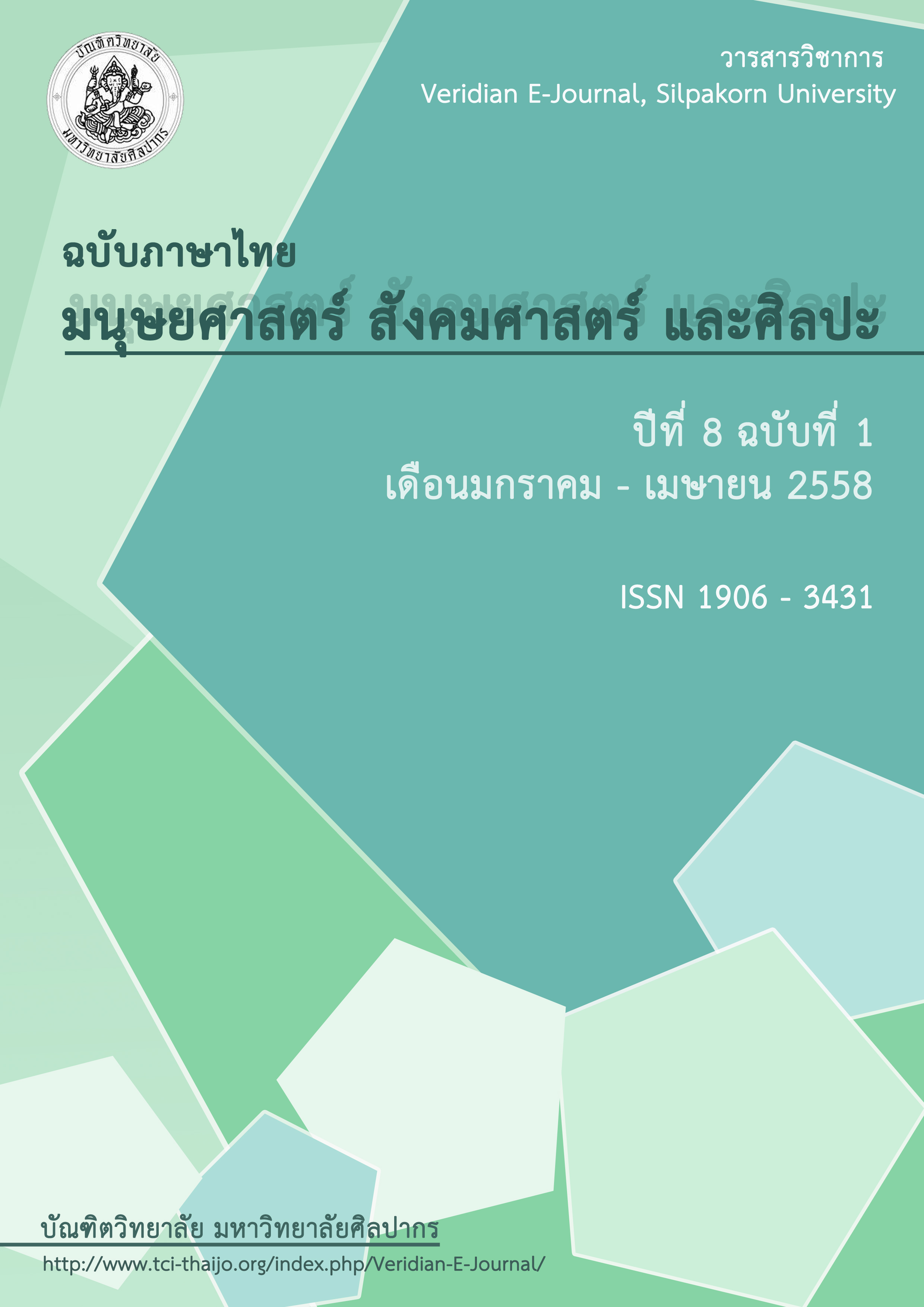รูปแบบและบทบาทหน้าที่ของกุณฑีในช่วงก่อนพุทธศตวรรษที่19
Main Article Content
Abstract
บทคัดย่อ
การศึกษารูปแบบและบทบาทหน้าที่ของกุณฑีในช่วงก่อนพุทธศตวรรษที่ 19 นี้ มีวัตถุประสงค์เพื่อศึกษารูปแบบกุณฑีที่พบในประเทศไทย ความสัมพันธ์ทางวัฒนธรรมระหว่างแหล่งโบราณคดีในประเทศไทยกับแหล่งโบราณคดีในเอเชียใต้และเอเชียตะวันออกเฉียงใต้จากการศึกษารูปแบบกุณฑีที่พบในแหล่งโบราณคดีนั้น และศึกษาหน้าที่การใช้งานของกุณฑีในช่วงก่อนพุทธศตวรรษที่ 19
ผลการศึกษาพบว่า รูปแบบกุณฑีที่พบในประเทศไทยสามารถแบ่งได้เป็น 5 กลุ่มใหญ่ ได้แก่ 1 กุณฑีที่มีพวยทรงตรง 2 กุณฑีที่มีพวยทรงโค้ง 3 กุณฑีที่มีพวยแบบมีขอบนูนยื่น 4 กุณฑีที่มีพวยทรงคาง 5.กุณฑีที่มีพวยแบบพิเศษ นอกจากนี้ยังพบว่ากุณฑีบางรูปแบบยังแสดงให้เห็นถึงความสัมพันธ์ทางวัฒนธรรมระหว่างชุมชนโบราณในประเทศไทยกับชุมชนโบราณในเอเชียใต้และในเอเชียตะวันออกเฉียงใต้อีกด้วย
เมื่อทำการศึกษาเทคโนโลยีการผลิตภาชนะประเภทกุณฑีที่พบในแหล่งโบราณคดีในประเทศไทยด้วยวิธีศิลาวรรณนาพบว่า กุณฑีที่พบในภาคใต้ใช้ดินธรรมชาติโดยไม่เติมส่วนผสมอื่นลงในดินปั้น ส่วนกุณฑีที่พบในภาคกลางพบส่วนผสมในเนื้อดินปั้น 3 กลุ่ม คือ 1.ดินธรรมชาติ 2.ทราย 3.แกลบข้าว ในขณะที่กุณฑีที่พบในภาคตะวันออกเฉียงเหนือนั้นมักพบว่ามีการเติมแกลบข้าวเป็นส่วนผสมลงในเนื้อดินปั้น
หน้าที่ใช้งานของกุณฑีที่พบในเอเชียใต้และเอเชียตะวันออกเฉียงใต้นั้น พบว่ามีการใช้งานที่เหมือนกันคือ มีการใช้ในครัวเรือน, มีการผลิตและกระจายผลผลิตไปขายยังชุมชนอื่นๆ, มีการใช้ในราชสำนักหรือเป็นเครื่องราชูปโภค, หน้าที่ด้านลัทธิความเชื่อซึ่งเข้ามาพร้อมกับความเชื่อทางศาสนา และพิธีกรรมที่เกี่ยวกับศพโดยพบว่ามีการใช้ใส่เครื่องเซ่นสังเวยและใช้เป็นโกศบรรจุกระดูก
Abstract
The objective of this study was to search for the typology and the function of kendi in Thailand, Prior to the 13th century, and to search for the mutual intercourse among the ancient towns in Thailand and to find the relationship of those ancient towns in Thailand with another ancient town in Southeast Asia and India.
The result of this study provide us the information that the kendis could be separated to 5 distinctive type, 1) Straight-spouted kendis 2) Curve-spouted Kendis 3) Flange-spouted Kendis 4) Chin-spouted Kendis 5) Special-spouted kendis.
The typology of kendis, discovered by this study has represented the cultural intercourse among ancient towns in Thailand and the relationship with another ancient town in Southeast Asia and India.
Due to the technology in the production of kendis that represented through the petrographic analysis also provide us the information that the production of kendis in the central region is distinctively composed of three main groups: 1) a group that contained only natural inclusion-natural soil ; 2) sand and 3) rice chaff or husks. In northeastern region, kendis was tempered with rice chaff. In Southern region, kendis was contained only natural soil.
The function of kendis found in Southeast Asia and India have no significant difference, such as domestic use, commercial production, court use as a royal utensil, religious use in Buddhism and Hinduism and ritual use related to the corpse.
